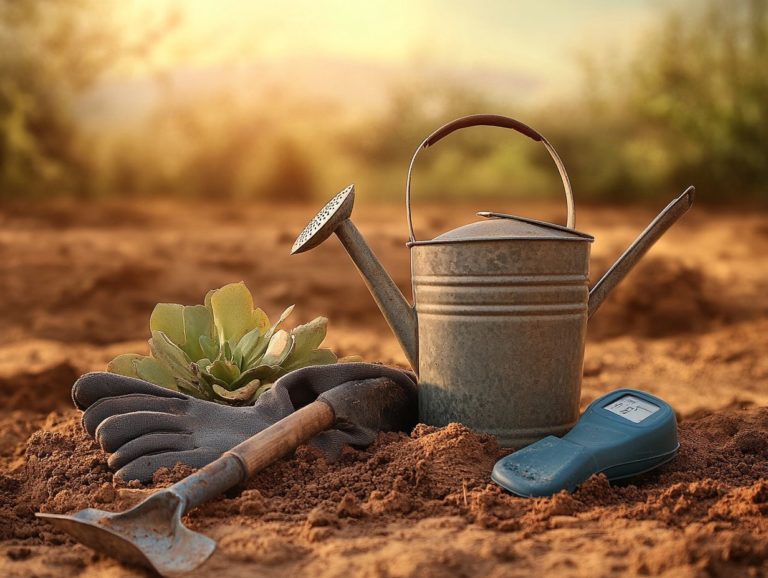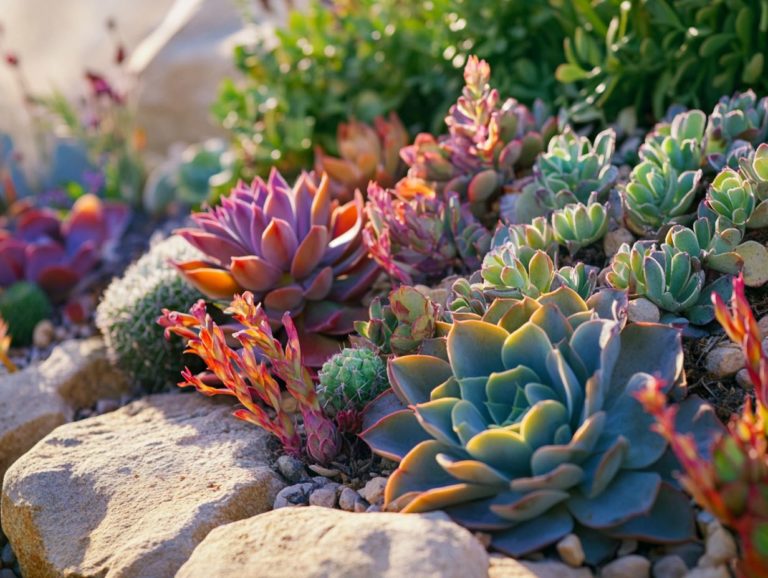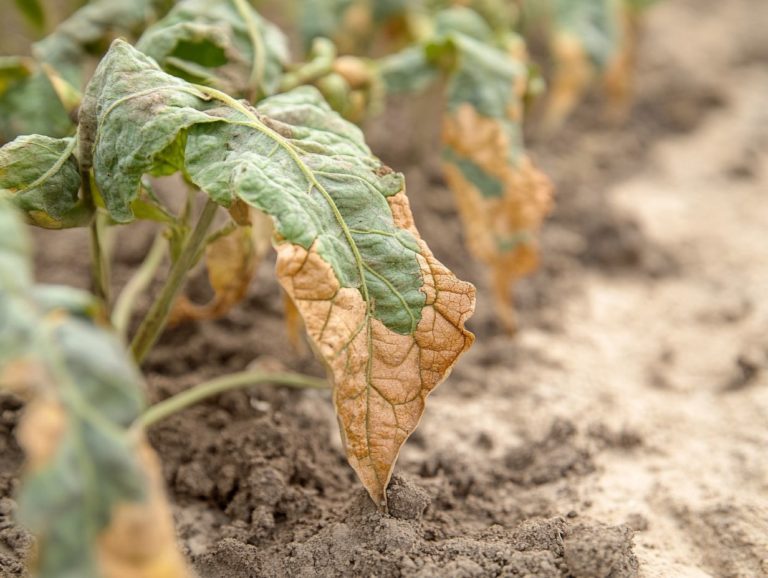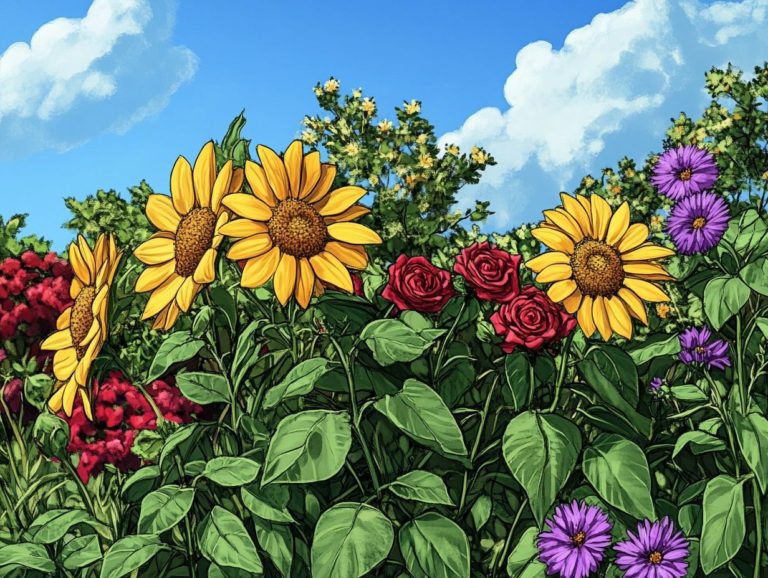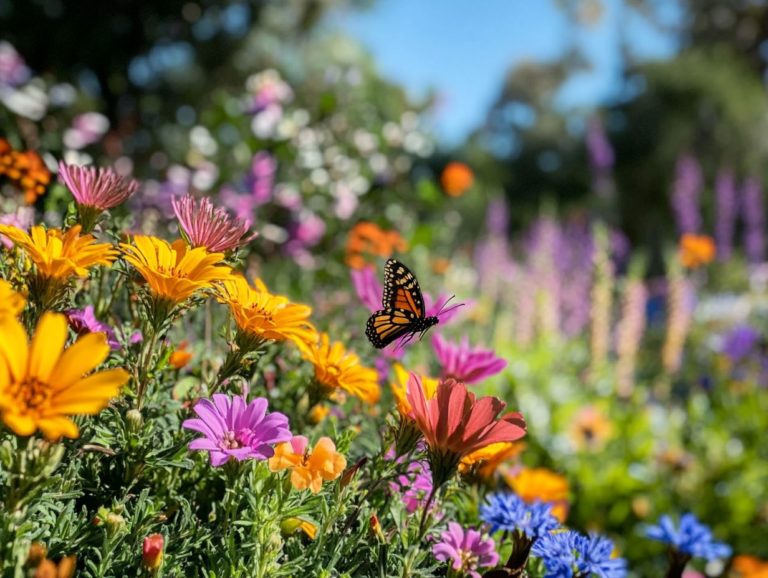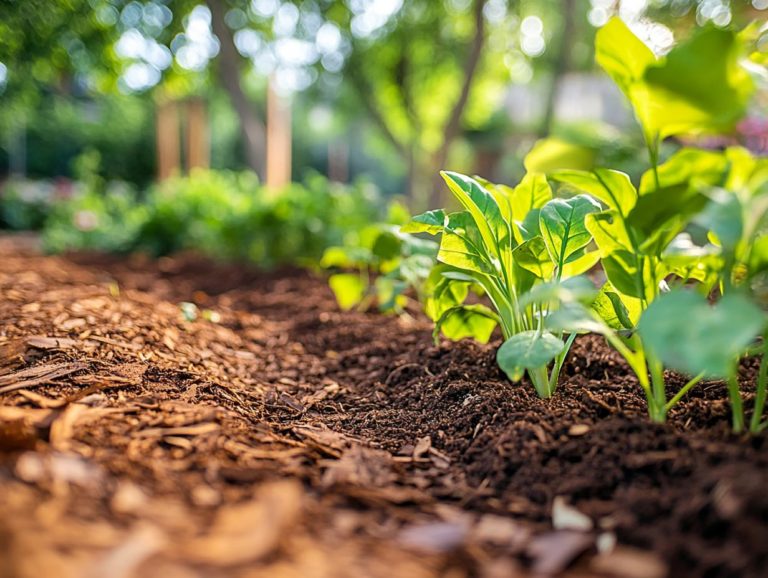What Are the Common Myths About Drought-Resistant Plants?
As climate change intensifies, the urgency for sustainable gardening solutions becomes increasingly apparent.
Drought-resistant plants present an intelligent option for conserving water while still cultivating a vibrant garden. Unfortunately, misconceptions surrounding these resilient varieties may prevent you from integrating them into your landscape.
This article delves into the significance of selecting drought-resistant plants, dispels common myths, and highlights their environmental and economic advantages. It also offers practical tips for seamlessly incorporating them into your garden.
Discover how these hardy plants can thrive in arid conditions and elevate your outdoor space!
Contents
- Key Takeaways:
- The Importance of Drought-Resistant Plants
- Myths About Drought-Resistant Plants
- Benefits of Drought-Resistant Plants
- How to Incorporate Drought-Resistant Plants in Your Garden
- Common Types of Drought-Resistant Plants
- Frequently Asked Questions
- What are the common myths about drought-resistant plants?
- Do drought-resistant plants only grow in desert environments?
- Are drought-resistant plants unattractive?
- Do drought-resistant plants require little to no maintenance?
- Are drought-resistant plants more expensive than traditional plants?
- Do all drought-resistant plants have thorns or prickly leaves?
Key Takeaways:
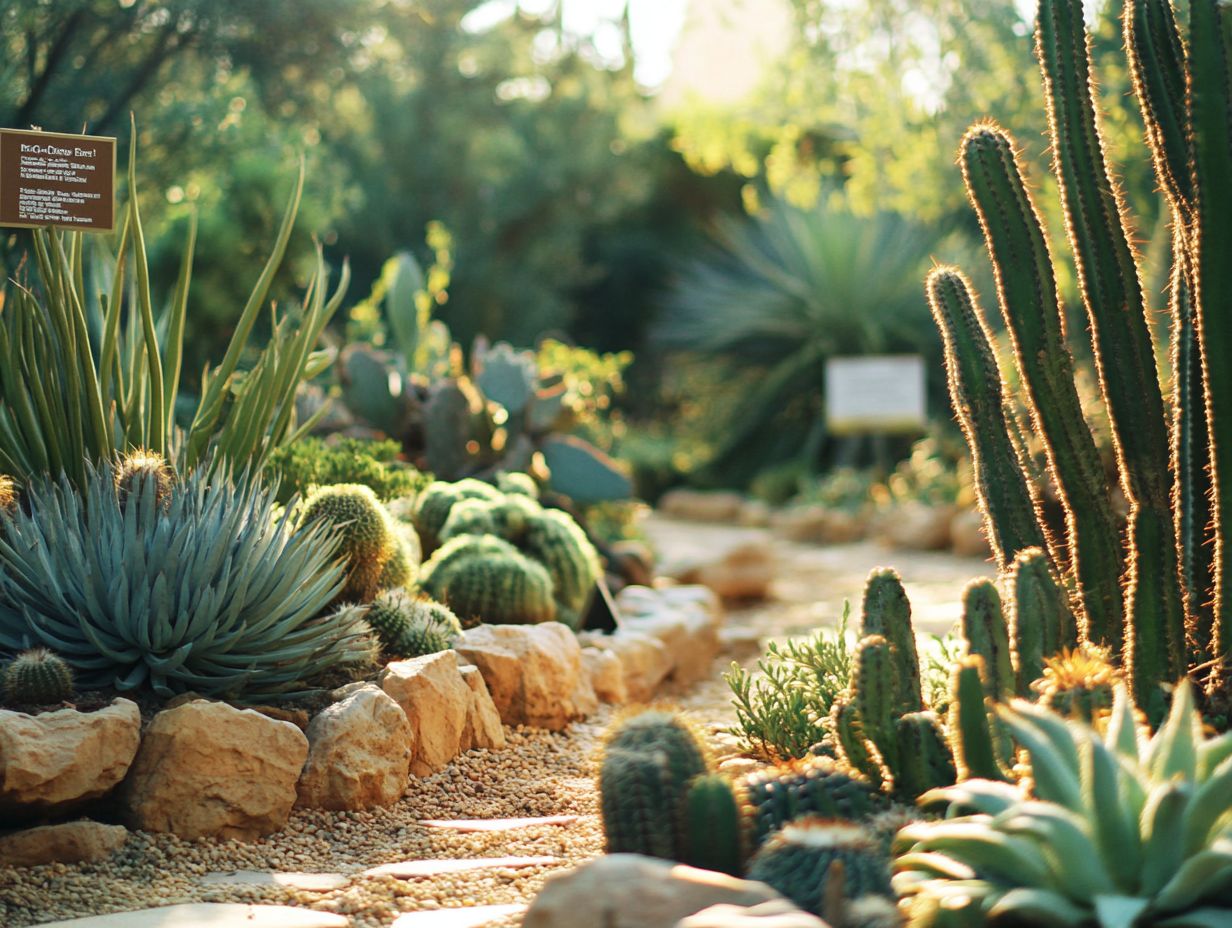
- Drought-resistant plants are not just for dry regions; they can thrive in a variety of climates.
- Contrary to popular belief, drought-resistant plants are not all cacti or succulents; there are many beautiful and diverse options to choose from.
- Incorporating drought-resistant plants in your garden can save money on watering and contribute to a more sustainable environment.
The Importance of Drought-Resistant Plants
Drought-resistant plants are crucial for sustainable gardening, especially in areas like the Puget Sound, where water scarcity is a pressing concern. These resilient plants, many of which are native species, possess robust root systems and unique adaptations that allow them to flourish during dry spells while effectively conserving water.
By selecting drought-tolerant varieties for your garden, you help conserve water and enhance the overall establishment of your green space.
Why Choose Drought-Resistant Plants?
Choosing drought-resistant plants is a savvy move for any gardener looking to conserve water while still enjoying a vibrant garden throughout the growing seasons.
These plants need far less water and help support local wildlife. By selecting species that thrive in dry conditions, you can create a lush landscape that needs less maintenance.
To boost plant health, consider grouping drought-tolerant varieties together. This creates small areas with different conditions that help them retain moisture naturally. You should implement effective watering techniques, like deep soaking during the early morning or late evening. This promotes established root systems and reduces evaporation, ensuring your plants flourish for the long haul.
Myths About Drought-Resistant Plants
Despite the increasing popularity of drought-resistant plants, several gardening myths continue to thrive, creating misconceptions about their care and suitability.
You might think these plants require little to no water; however, the truth is that employing proper watering techniques and understanding their specific moisture needs are essential for their healthy establishment and growth.
Debunking Common Misconceptions
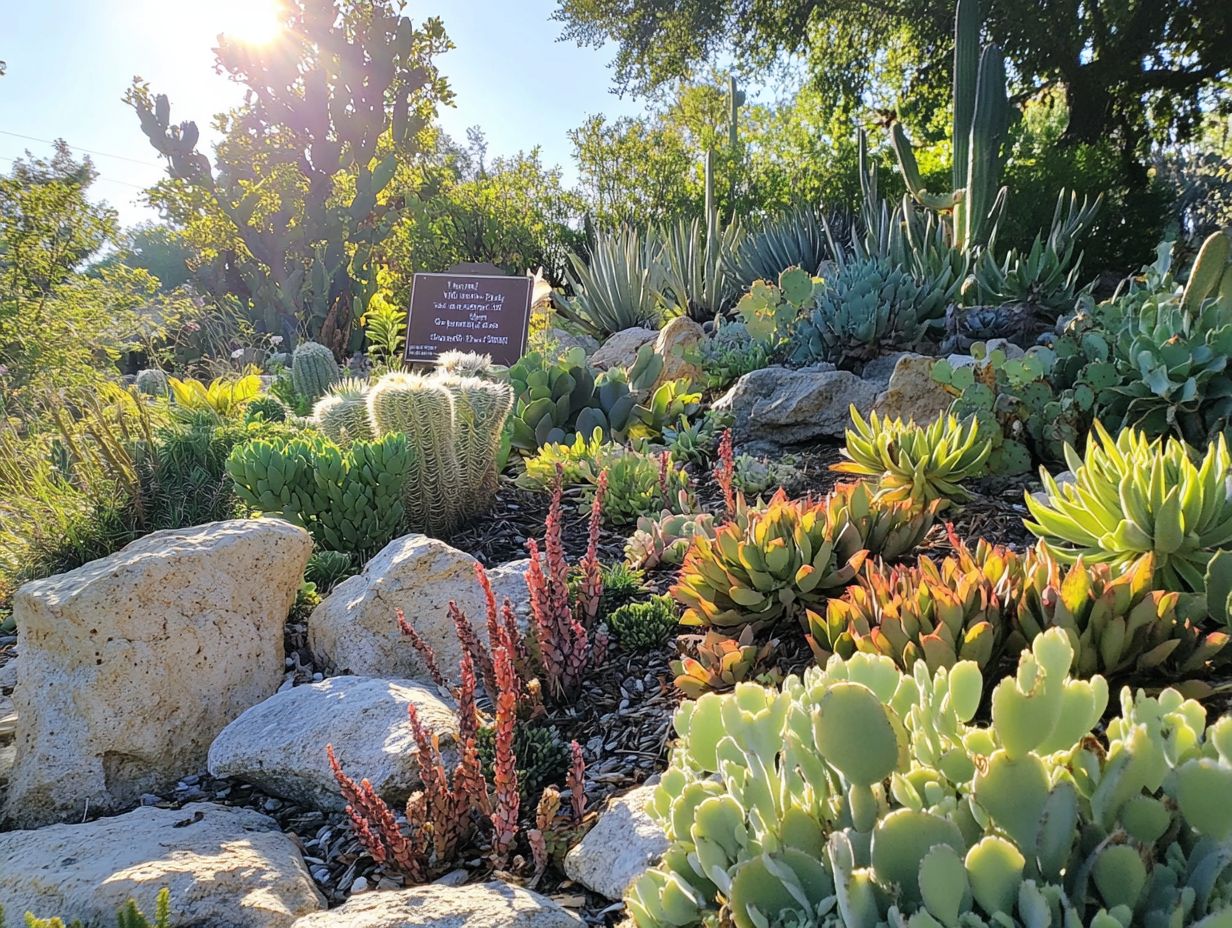
Misconceptions about drought-resistant plants often revolve around their care, leading to misunderstandings regarding their soil moisture requirements and susceptibility to disease.
For example, you might think that once these plants are established, they need no water at all. This couldn’t be further from the truth. In reality, drought-resistant varieties still thrive with occasional watering, particularly during extended dry spells; this practice helps maintain their vigor and ward off diseases.
Adopting proper gardening techniques, such as mulching covering the soil with materials to retain moisture and ensuring excellent soil drainage, is crucial for fostering healthy growth. By maintaining consistent moisture levels while steering clear of overwatering, you can significantly reduce the chances of fungal diseases, ensuring your garden flourishes and remains resilient.
Benefits of Drought-Resistant Plants
Discover how drought-resistant plants can transform your garden and save you money! These plants offer a range of environmental and economic advantages, elevating both your personal garden and the wider ecological landscape.
By decreasing your dependence on limited water resources, you can reduce your water bills and lessen the need for constant upkeep. This paves the way for a more sustainable approach to gardening, allowing you to cultivate beauty while embracing responsibility.
Environmental and Economic Advantages
Incorporating drought-resistant plants into your landscaping leads to significant savings and improved ecological health.
These remarkable plants, equipped with deep root systems and waxy leaves, thrive in arid conditions with minimal water. This reduces the need for constant irrigation, helping you lower your water costs while contributing to conservation efforts.
Consider succulents and native grasses. These species demonstrate impressive adaptation strategies. They store water during dry spells and use it efficiently when conditions improve.
Embracing such flora enhances local biodiversity. They provide habitats for various pollinators and beneficial insects, fostering a balanced ecosystem that enriches your entire landscape.
How to Incorporate Drought-Resistant Plants in Your Garden
Incorporating drought-resistant plants requires thoughtful planning and an understanding of their unique needs. You’ll need to explore proper establishment techniques and develop effective watering strategies.
Tips for Choosing and Caring for Drought-Resistant Plants
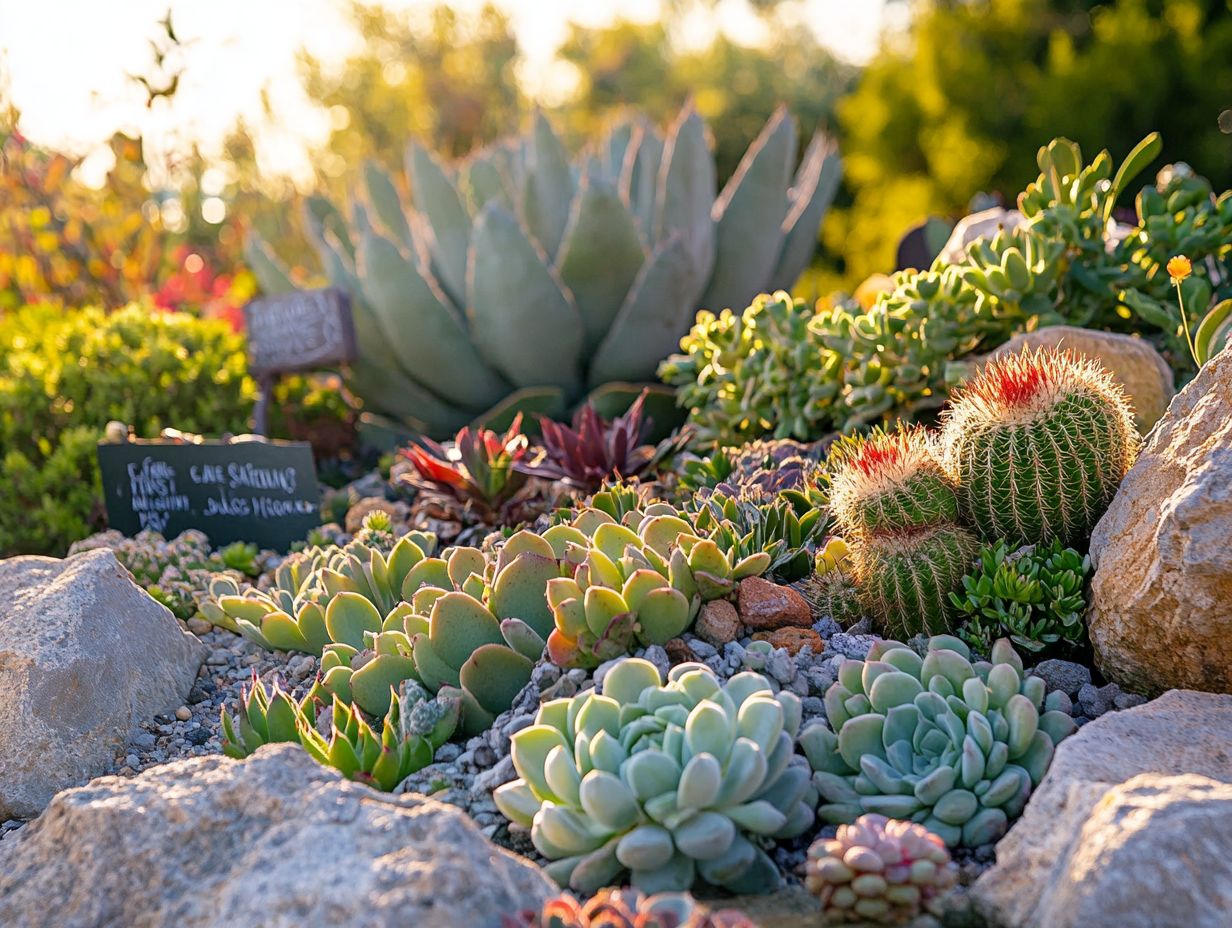
When selecting drought-resistant plants, consider their specific needs, such as root systems and seasonal care requirements. These factors help them thrive in your garden.
The local climate significantly affects their survival and growth. Factors like sunlight exposure, temperature fluctuations, and regional rainfall can impact their development.
Understanding the type of soil whether it’s sandy, clayey, or loamy is vital, as it affects drainage and nutrient availability.
To promote healthy growth, establish a consistent watering routine that adapts to seasonal changes. During warmer months, more frequent watering may be necessary, while in cooler periods, scaling back helps prevent over-saturation.
Common Types of Drought-Resistant Plants
You have a wealth of drought-resistant plants at your disposal for gardens designed to use little water. Consider incorporating popular choices like:
- Lavender
- Rosemary
- Juniper
- Sedum
- Rockrose
- Yucca
Each of these plants offers unique beauty and remarkable resilience, enhancing your garden s aesthetic while minimizing water needs.
Examples of Plants That Thrive in Dry Conditions
Drought-tolerant plants like lavender, sedum, and yucca stand out as species that thrive in dry conditions. They showcase impressive environmental adaptability and remarkable water retention capabilities.
These resilient plants enhance the beauty of your gardens and landscapes with their unique foliage and vibrant blooms. They require minimal maintenance, making them perfect for your busy lifestyle.
Imagine lavender, with its fragrant purple flowers, drawing in pollinators while its drought resistance allows it to flourish even in tough climates.
Sedum, known for its fleshy, green leaves, offers excellent ground cover and helps prevent soil erosion. It adapts effortlessly to poor soil conditions.
Then there’s yucca, with its striking spiky leaves and tall flower stalks. It adds a bold architectural flair to your outdoor spaces while demonstrating an impressive ability to endure extended dry spells.
Their adaptability to arid environments reinforces their value in sustainable gardening practices, making them an excellent choice for any conscientious gardener.
Frequently Asked Questions
What are the common myths about drought-resistant plants?
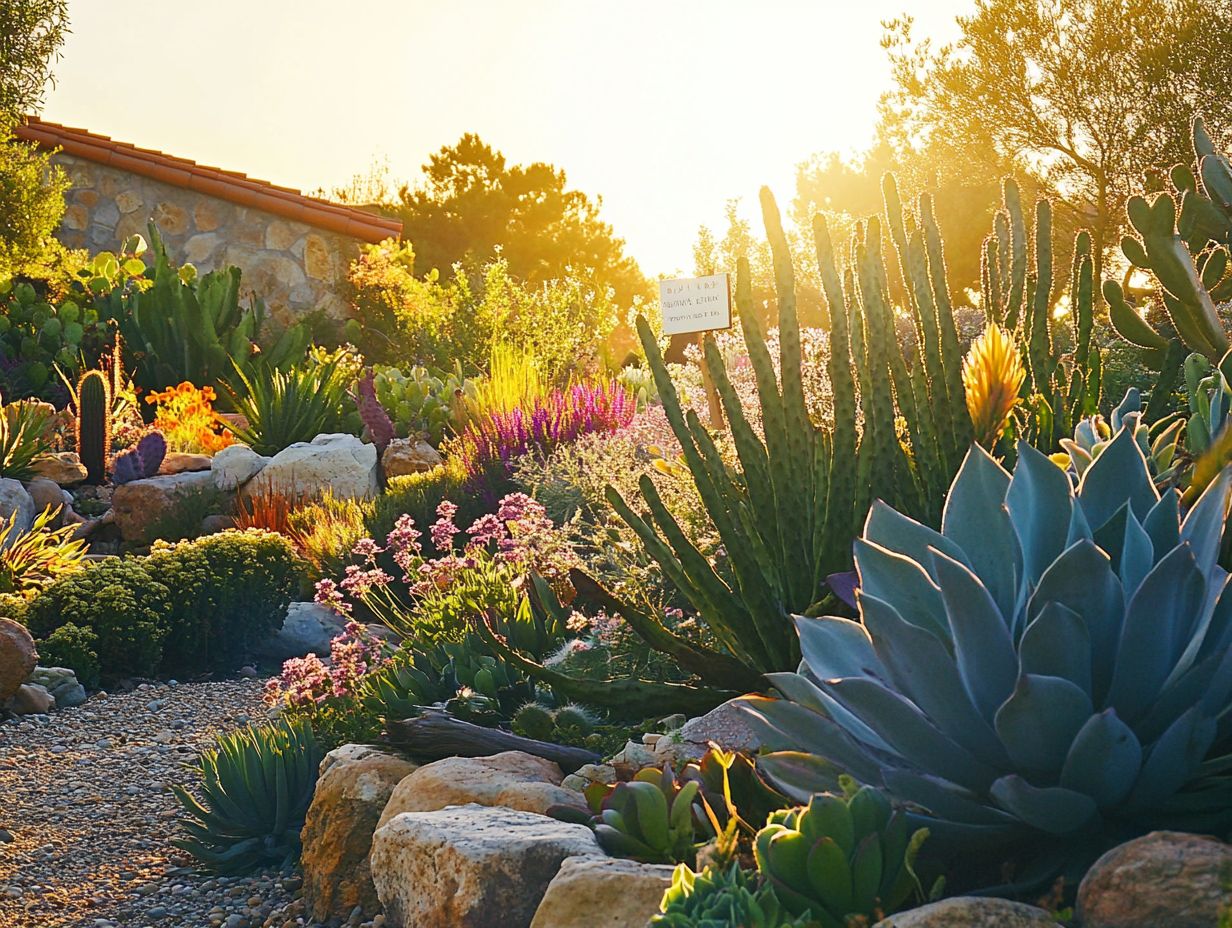
Many people believe drought-resistant plants only thrive in deserts.
Others think they look unattractive and require little maintenance.
Do drought-resistant plants only grow in desert environments?
Not at all! While some do thrive in deserts, many can flourish in various climates and conditions.
Are drought-resistant plants unattractive?
Absolutely not! Many drought-resistant plants are vibrant and boast unique textures that enhance any landscape.
Do drought-resistant plants require little to no maintenance?
They are resilient, but these plants still need regular care and watering, just like any other plant.
Are drought-resistant plants more expensive than traditional plants?
It depends. Some exotic drought-resistant varieties can be pricey, but many affordable options are available.
Do all drought-resistant plants have thorns or prickly leaves?
No! Many varieties are soft to the touch and safe for pets and children.

